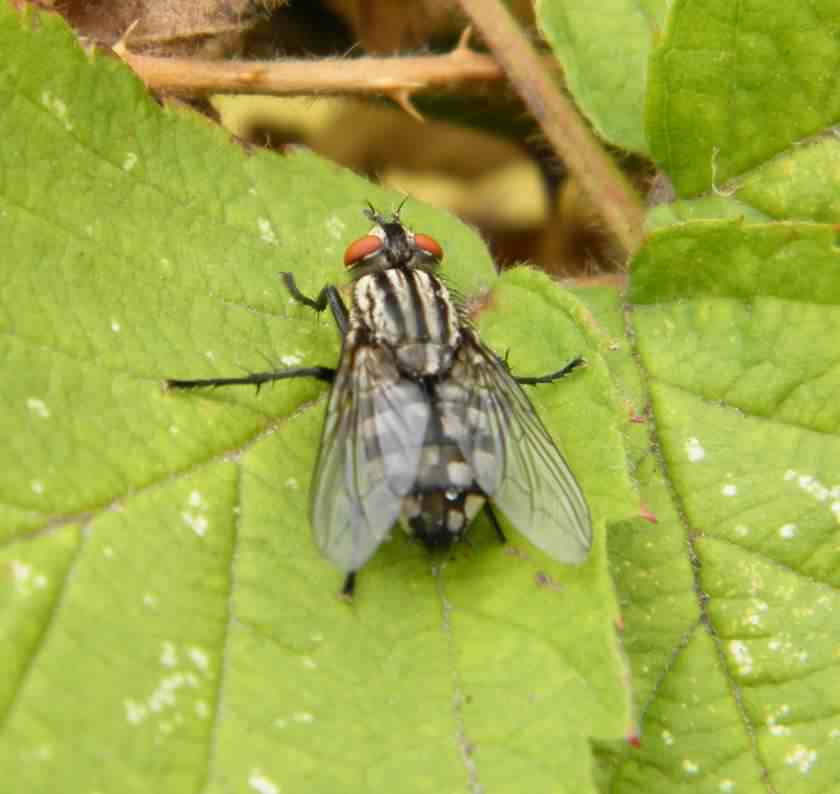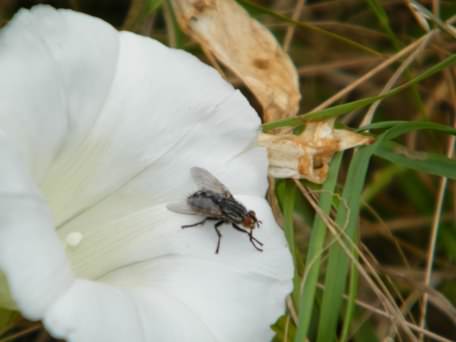
Photos ©2009–
Click any photo for a larger image


Photos ©2009–
Click any photo for a larger image

Flesh Fly - Sarcophaga spp.
Family - Sarcophagidae
There are several Sarcophaga in the "Blow–fly" group and are a species that are difficult to positively identify without close examination, however they are never metallic coloured. The species is noted for its dark red, forward–facing eyes with black and grey longitudinal stripes on the thorax and checkering on the abdomen, however due to the variability of the species this photo and description are a generalisation only until the photo is positively identified.
Varying sizes up to about 15mm (0.6in) they are found in two distinct size forms (large & small!) the contrasting black and grey stripes on the thorax and chequerboard abdomen is common but not a specific identification to this genus. Viviparous females produce live larvae (maggots), which as their common name suggests, they lay in carrion or the open wounds of mammals, dung, or decaying material, they also eat the larvae of grasshoppers beetles, snails? and various caterpillars. This behaviour is an indication of a beneficial insect helping to dispose of dead animals. The larvae complete growth within 5–10 days, burrow into soil to pupate and over winter. It is a conspicuous fly that may be found all year round.
Flesh flies have a prominent row of setae on each side of the thorax just above the base of the hind leg in addition to another row of bristles just under the base of the wing. These two sets of bristles differentiate the flesh flies from the Muscid flies.
Site design ©1999– Brickfields Country Park - Privacy -